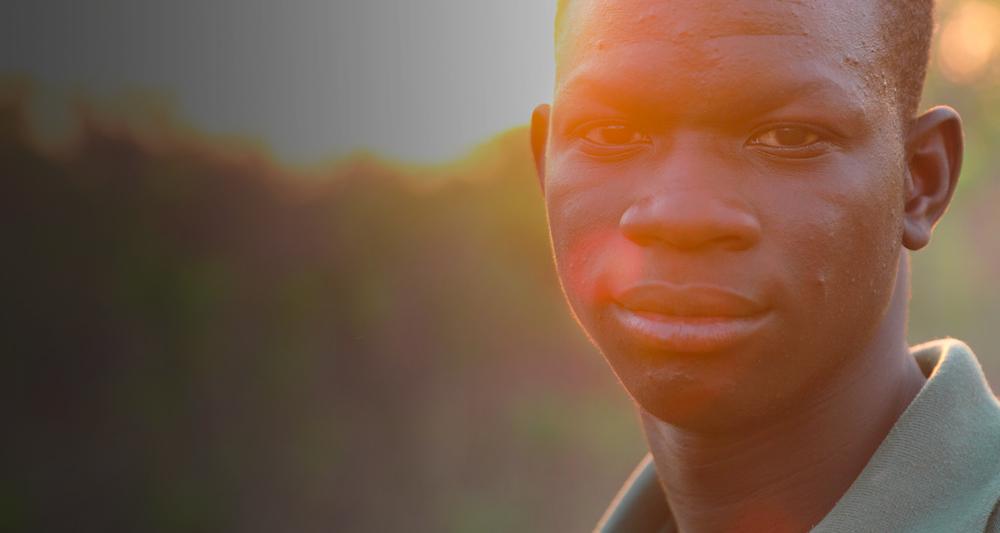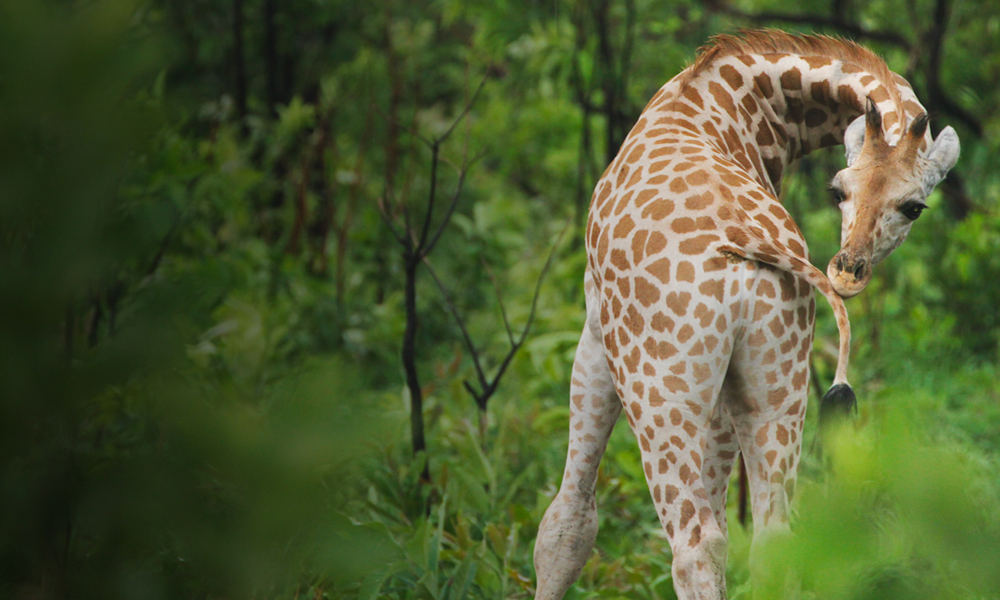
Our Conservation Plan
Protect or see it Destroyed:
the Choice is ours
The habitats of the Sahelo-Sudan Savanna ecoregion are categorised as “endangered” as the integrity of the region’s interconnected and interdependent ecosystems has been significantly compromised by permanent and ongoing environmental degradation.
Allowing the degradation of one of the largest ecoregion on the African continent to continue is no longer tolerable. There is the capacity and opportunity to establish strategies and actions that can build and enhance natural & artificial resilience of the environment and manage conflicts in and around the protected areas.
These strategies must be implemented immediately through collaborative actions.
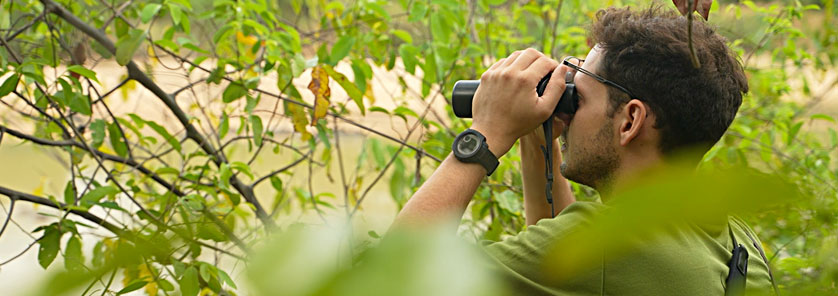
Strengthen the Monitoring of Protected Areas
Acquisition of equipment & technologies necessary for the effective surveillance of Protected Areas:
→ Complete uniforms (shoes, belts, etc.), binoculars, night vision technologies, defence weapons for anti-poaching teams
→ Cameras, trail cameras, and long range drones all incorporating the latest technologies
→ Local & regional communication technologies (short and long range radios, smart GPS, sat phones, etc.)
→ Vehicles (4x4, motorbikes), boats (mainly for the rainy season) and possibly regular or occasional air support
→ Comfortable tents and related equipment
Recruitment of personnel in charge of monitoring the environment and wildlife in the field:
→ Training of anti-poaching brigades by professionals of the sector (foster the added value towards careers)
→ Training & coaching of field rangers and control room teams, etc.
→ Establishment of a highly-trained paramilitary anti-poaching squad operating in all the protected areas across Northern Cameroon, and replacing the state military's activities in protected areas where the military is often not competent for the operation requirements
→ Centralised coordination of conservation, environmental management, and law enforcement and surveillance strategies and operations across the network of protected areas.
→ Information sharing, communication, and coordination between all conservation actors in the field, with regular joint operations including the organisation of joint patrols with the army, the eco-guards of the National Parks and anti-poaching teams of other protected areas.
→ Creation of an intelligence exchange network and paid informants (TANGO project).
→ Careful recruitment criteria (e.g. recruiting staff from outside of the area) and effective staff rotations to avoid family and friend ties and/or the establishment of local social, busineess, or ally liaisons.
→ Construction of anti-poaching guard camps in sensitive areas.
→ Rigorous and increased control and monitoring of access roads (e.g., departmental roads that cross our protected areas) and trail networks to prevent illegal activities and the circulation of traffickers.
→ Creation of a reward/bounty system that financially rewards effective policing and intelligence gathering.
Acquisition of equipment & technologies necessary for the effective surveillance of Protected Areas:
→ Complete uniforms (shoes, belts, etc.), binoculars, night vision technologies, defence weapons for anti-poaching teams
→ Cameras, trail cameras, and long range drones all incorporating the latest technologies
→ Local & regional communication technologies (short and long range radios, smart GPS, sat phones, etc.)
→ Vehicles (4×4, motorbikes), boats (mainly for the rainy season) and possibly regular or occasional air support
→ Comfortable tents and related equipment
Recruitment of personnel in charge of monitoring the environment and wildlife in the field:
→ Training of anti-poaching brigades by professionals of the sector (foster the added value towards careers)
→ Training & coaching of field rangers and control room teams, etc.
→ Establishment of a highly-trained paramilitary anti-poaching squad operating in all the protected areas across Northern Cameroon, and replacing the state military’s activities in protected areas where the military is often not competent for the operation requirements
→ Centralised coordination of conservation, environmental management, and law enforcement and surveillance strategies and operations across the network of protected areas.
→ Information sharing, communication, and coordination between all conservation actors in the field, with regular joint operations including the organisation of joint patrols with the army, the eco-guards of the National Parks and anti-poaching teams of other protected areas.
→ Creation of an intelligence exchange network and paid informants (TANGO project).
→ Careful recruitment criteria (e.g. recruiting staff from outside of the area) and effective staff rotations to avoid family and friend ties and/or the establishment of local social, busineess, or ally liaisons.
→ Construction of anti-poaching guard camps in sensitive areas.
→ Rigorous and increased control and monitoring of access roads (e.g., departmental roads that cross our protected areas) and trail networks to prevent illegal activities and the circulation of traffickers.
→ Creation of a reward/bounty system that financially rewards effective policing and intelligence gathering.
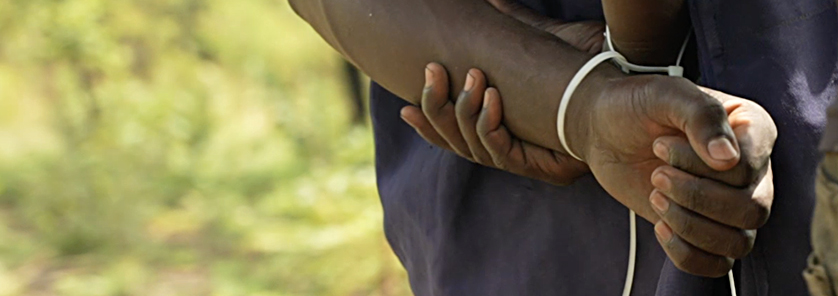
Strengthen the Judicial System & Improve the Enforcement of Sanctions
→ Ensure the existence and follow-up of judicial procedures following a reported misdeed, poacher brought to justice, etc.
→ Ensure the enforcement of legal sanctions through awareness campaigns with the police, gendarmes, judges and prosecutors, on behalf of The Faro Conservancy Project Association and all its partners
→ Improve the knowledge of those in the judicial system of why environmental crimes committed in protected areas are significant and should be punished accordingly
→ Modify the judicial legislation, which dates back to 1976, and is no longer adapted to the dynamic problems of today's protected areas
→ Recruit staff dedicated to cultivating the relationship with the local authorities
→ Ensure the existence and follow-up of judicial procedures following a reported misdeed, poacher brought to justice, etc.
→ Ensure the enforcement of legal sanctions through awareness campaigns with the police, gendarmes, judges and prosecutors, on behalf of The Faro Conservancy Project Association and all its partners
→ Improve the knowledge of those in the judicial system of why environmental crimes committed in protected areas are significant and should be punished accordingly
→ Modify the judicial legislation, which dates back to 1976, and is no longer adapted to the dynamic problems of today’s protected areas
→ Recruit staff dedicated to cultivating the relationship with the local authorities
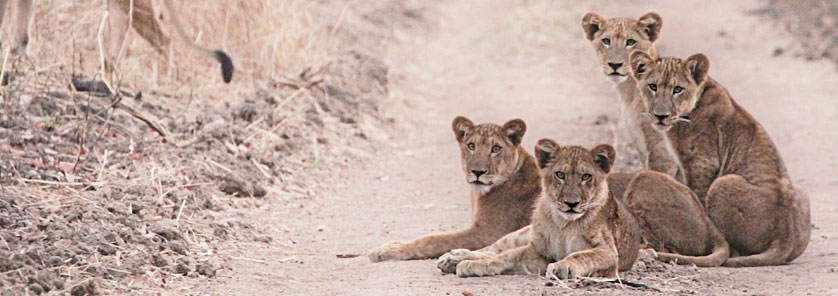
Renaturalization of Abandoned Protected Areas
By establishing a single & unified legal entity (The Faro Conservancy Project & Local Civil Society Organisation that we represent as well), and with the help of our international partners, we would have greater power to negotiate that the Cameroonian government grant us leases, with preferential conditions, for abandoned, non-active Protected Areas. In exchange for more flexible leasing contracts, we could commit to mobilising resources that improve natural and artificial resilience of the environment.
It will also be an opportunity to negotiate extensions to the duration of Protected Areas leases with the Cameroonian authorities, in order to establish our collaboration with major European institutions.
Promoting Natural Resilience through:
→ Anti human and livestock invasion control of protected areas and corridors
→ Vegetation restoration
→ Natural resilience of plant & animal species in protected areas
Implementing Artificial Resilience strategies:
→ Breeding & reintroduction of animal species such as the Kordofan giraffe and damalisque (Damaliscus korrigum). The damalisque offers interesting economic opportunities for Cameroon given that its current distribution is very limited, plus preservation opportunities as it is currently threatened.
→ There is the possibility of using the skills of domestic herders to benefit wildlife farming, thus involving the cattle herders in an eco-friendly transition.
Promoting Natural Resilience through:
→ Anti human and livestock invasion control of protected areas and corridors
→ Vegetation restoration
→ Natural resilience of plant & animal species in protected areas
Implementing Artificial Resilience strategies:
→ Breeding & reintroduction of animal species such as the Kordofan giraffe and damalisque (Damaliscus korrigum). The damalisque offers interesting economic opportunities for Cameroon given that its current distribution is very limited, plus preservation opportunities as it is currently threatened.
→ There is the possibility of using the skills of domestic herders to benefit wildlife farming, thus involving the cattle herders in an eco-friendly transition.
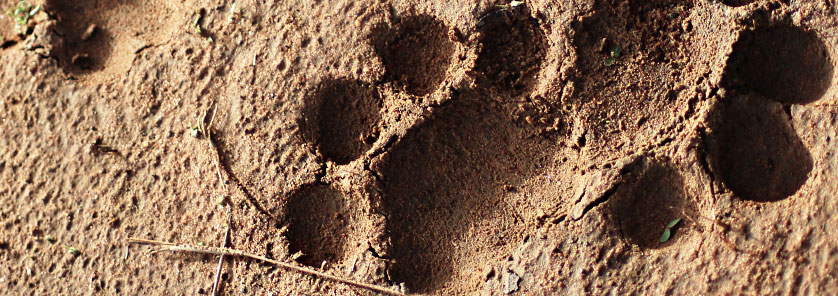
Setting up of Ecological Monitoring within Protected Areas
Organization of inventories / wildlife counts by accredited and competent organizations:
→ These counts on a national scale will allow us to have a better understanding of wildlife resources and thus apply better management of protected areas.
→ These counts could justify closing the hunting of certain species in favour of opening up other species (e.g., the crocodile, which has been protected for nearly 50 years, has no predator once an adult and because of its capacity to proliferate and its very long life expectancy, it may cause heavy environmental impacts, particularly on fish populations).
Reintroduction and translocation of species or single animals (e.g., so-called "problem" animals, lions that wreak havoc on herds of cattle in the Central Region of Cameroon and risk administrative beatings or reprisals from herders if they are not relocated).
Organization of inventories / wildlife counts by accredited and competent organizations:
→ These counts on a national scale will allow us to have a better understanding of wildlife resources and thus apply better management of protected areas.
→ These counts could justify closing the hunting of certain species in favour of opening up other species (e.g., the crocodile, which has been protected for nearly 50 years, has no predator once an adult and because of its capacity to proliferate and its very long life expectancy, it may cause heavy environmental impacts, particularly on fish populations).
Reintroduction and translocation of species or single animals (e.g., so-called “problem” animals, lions that wreak havoc on herds of cattle in the Central Region of Cameroon and risk administrative beatings or reprisals from herders if they are not relocated).
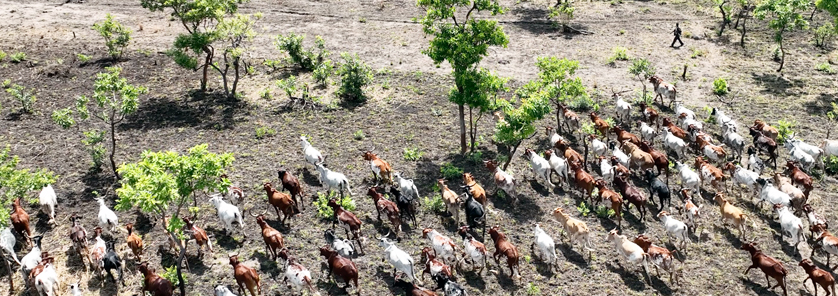
Better Management of Pastures & Pastoral Activities
The restoration of transhumance corridors through protected areas is not necessarily a good idea. History shows that the nomadic herdsmen do not respect the rules that apply to them. The development of water points on the edges of protected areas also has the potential to have undesired and damaging consequences in that it will promote an influx of people and the establishment of new villages.
Development & restoration of extensive grazing areas, far removed from the Protected Areas:
→ Identification of existing or to-be-developed grazing areas within unoccupied spaces (there are many such areas across Cameroon) in order to relocate nomadic herder populations and their cattle
→ Development of grazing areas, creation of boreholes and water points
→ Restoration of existing pastures (elimination of invasive plants)
→ Informed, active management of grasslands, rotation systems to avoid overgrazing and related problems (appearance of invasive plants, soil degradation, etc.). Properly managed, cattle herds can participate in the regeneration of soils and plant species if known protocols are adhered to. The regenerative process and management of soil organic matter also allows grassland soils to better sequester carbon through plant photosynthesis and thus reduce the impact of greenhouse gas emissions such as methane.
→ Identification of new transhumance corridors
→ Installation and monitoring of fences to divert and channel transhumance, but being careful not to block transhumance corridors of wild species (e.g. elephants) migration and movements
Development & restoration of extensive grazing areas, far removed from the Protected Areas:
→ Identification of existing or to-be-developed grazing areas within unoccupied spaces (there are many such areas across Cameroon) in order to relocate nomadic herder populations and their cattle
→ Development of grazing areas, creation of boreholes and water points
→ Restoration of existing pastures (elimination of invasive plants)
→ Informed, active management of grasslands, rotation systems to avoid overgrazing and related problems (appearance of invasive plants, soil degradation, etc.). Properly managed, cattle herds can participate in the regeneration of soils and plant species if known protocols are adhered to. The regenerative process and management of soil organic matter also allows grassland soils to better sequester carbon through plant photosynthesis and thus reduce the impact of greenhouse gas emissions such as methane.
→ Identification of new transhumance corridors
→ Installation and monitoring of fences to divert and channel transhumance, but being careful not to block transhumance corridors of wild species (e.g. elephants) migration and movements

Development of Dynamic Economic Sectors
Some agricultural and natural indigenous products have high values and strong economic spin-offs and thus the potential to offer sustainable commercial alternatives for local populations (especially those involved in illegal and damaging activities). Below are a few examples of dynamic alternatives.
Honey from one of the Melipona bee species is a rare nectar, which has little commercial interest on the domestic market since a hive produces a few dozen centilitres per year. However, exported and positioned within the foreign luxury market, it can generate significant economic revenue and be part of a sustainable approach to creating value and wealth.
The establishment of Melipona bee colonies and the conservation of these insects, which are negatively impacted by the typical rampant bush fires, aids pollination and vegetation productivity. Coupled with agro-ecology projects (see below), Melipona projects could create very positive ecological synergies.
The honey market study that we have conducted demonstrates the interest and commercial potential of this type of product. We have already made prototypes of hives and initiated a study of these animals and their honey.
We need to continue the studies and the product tests to develop the product and marketing, establish distribution channels, build partnerships with local populations, and supply kits and training. Once the model is established, it can be duplicated on any scale in any of the three savannah regions of the North, Far North & Adamaoua, etc.
Shea butter, which is a thick oil made from the indigenous shea tree (Vitellaria paradoxa) has long been a high-end highly valued ingredient for the cosmetics industry in the developed world. As an export product, shea butter has the potential to raise significant revenues for local populations, especially if the the natural density of shea trees is increased by active planting of the trees. Organised shea butter harvesting and production cooperatives have been successfully implemented in other Sahelo-Sudanian Savanna countries like Burkina Faso (in Burkina shea nuts are the countries third most important export).
There is great potential for communities in community areas adjacent to the protected areas to protect their own areas such that the wild game numbers are restored and then to develop these zones for hunting tourism for foreign guests. There are some excellent examples of this model from Burkina Faso and Zimbabwe. Models vary, but in Burkina the community provides the entire service to foreign hunters from accommodation, and meals to guiding the hunters themselves. An added benefit is that the community gets the meat too (on top of the trophy fee, day fees, accommodation fees, etc.). This style of hunting tourism is somewhat different to that offered by the established hunting operator lease holders and should therefore not be seen to be in competition with the established operations. This model has the potential to be a real win-win for rural populations, wildlife, and conservation as a whole.
Honey from one of the Melipona bee species is a rare nectar, which has little commercial interest on the domestic market since a hive produces a few dozen centilitres per year. However, exported and positioned within the foreign luxury market, it can generate significant economic revenue and be part of a sustainable approach to creating value and wealth.
The establishment of Melipona bee colonies and the conservation of these insects, which are negatively impacted by the typical rampant bush fires, aids pollination and vegetation productivity. Coupled with agro-ecology projects (see below), Melipona projects could create very positive ecological synergies.
The honey market study that we have conducted demonstrates the interest and commercial potential of this type of product. We have already made prototypes of hives and initiated a study of these animals and their honey.
We need to continue the studies and the product tests to develop the product and marketing, establish distribution channels, build partnerships with local populations, and supply kits and training. Once the model is established, it can be duplicated on any scale in any of the three savannah regions of the North, Far North & Adamaoua, etc.
Shea butter, which is a thick oil made from the indigenous shea tree (Vitellaria paradoxa) has long been a high-end highly valued ingredient for the cosmetics industry in the developed world. As an export product, shea butter has the potential to raise significant revenues for local populations, especially if the the natural density of shea trees is increased by active planting of the trees. Organised shea butter harvesting and production cooperatives have been successfully implemented in other Sahelo-Sudanian Savanna countries like Burkina Faso (in Burkina shea nuts are the countries third most important export).
There is great potential for communities in community areas adjacent to the protected areas to protect their own areas such that the wild game numbers are restored and then to develop these zones for hunting tourism for foreign guests. There are some excellent examples of this model from Burkina Faso and Zimbabwe. Models vary, but in Burkina the community provides the entire service to foreign hunters from accommodation, and meals to guiding the hunters themselves. An added benefit is that the community gets the meat too (on top of the trophy fee, day fees, accommodation fees, etc.). This style of hunting tourism is somewhat different to that offered by the established hunting operator lease holders and should therefore not be seen to be in competition with the established operations. This model has the potential to be a real win-win for rural populations, wildlife, and conservation as a whole.
Developing rural-production economic chains that feed into the revitalisation of the local socio-economic structure, and can also contribute to food production are also very beneficial to divert populations from partaking in harmful/illegal activities and convert them into actors that aid the conservation of biodiversity.
→ Traditional crops like sweet potatoes, peanuts and many other products can be included in the creation of dynamic economic channels.
→ Development of fisheries (e.g. tilapia) outside the preserves (aquaponics, small-scale intensive production).
→ Breeding of common grasscutters (Thryonomys) or duikers because of their good reproductive performance.
As always, care must be taken not to develop these activities too close to protected areas, or without the correct protocols. Human disturbance can negatively affect animals’ habits. For example, the collection of honey in an area in Tanzania has been shown to change animals behaviour to becoming more nocturnal.
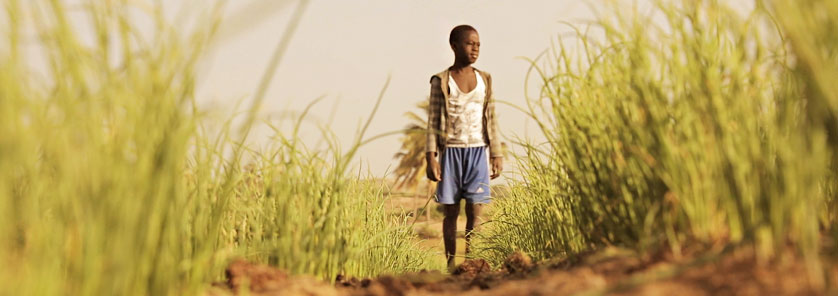
Fostering the Agro-Ecological Transition
Agroecology is not only limited to the application of more environmentally friendly practices restoring soil fertility, but creates a path towards improved ecological and social resilience. It takes into account local resources and traditional techniques and practices. It implies a collective and dynamic approach by the actors of the territory and allows for the exchange of knowledge / know-how, and the development of a sector for better valorisation of the local agricultural production, and improved management of agricultural spaces.
The objectives are multiple:
→ Ecological resilience: to promote plant diversity, regenerate soils, fight desertification
→ Food Sovereignty: valorise and grow local know-how and improve human health
→ Local Development: create employment and boost local economic exchanges
In the context of economic urgency, the approach in order to initiate agroecological transitions, in collaboration with the customary authorities, can be defined as follows:
→ By establishing micro-farms, be the initiator of agroecological experiments in defined areas within the different agricultural domains (market gardening, animal husbandry, water management, energy and building, creation of nurseries for the villagers themselves or their domestic herds). In other words, to demonstrate to the population the existence of a set of sustainable and accessible agricultural solutions, and to justify their economic and ecological relevance.
→ By establishing farm-schools, teach the know-how of this agricultural space: driven on solutions, their implementation and their management by training young people towards the development and management of agroecological projects. Set up farm-schools.
The objectives are multiple:
→ Ecological resilience: to promote plant diversity, regenerate soils, fight desertification
→ Food Sovereignty: valorise and grow local know-how and improve human health
→ Local Development: create employment and boost local economic exchanges
In the context of economic urgency, the approach in order to initiate agroecological transitions, in collaboration with the customary authorities, can be defined as follows:
→ By establishing micro-farms, be the initiator of agroecological experiments in defined areas within the different agricultural domains (market gardening, animal husbandry, water management, energy and building, creation of nurseries for the villagers themselves or their domestic herds). In other words, to demonstrate to the population the existence of a set of sustainable and accessible agricultural solutions, and to justify their economic and ecological relevance.
→ By establishing farm-schools, teach the know-how of this agricultural space: driven on solutions, their implementation and their management by training young people towards the development and management of agroecological projects. Set up farm-schools.
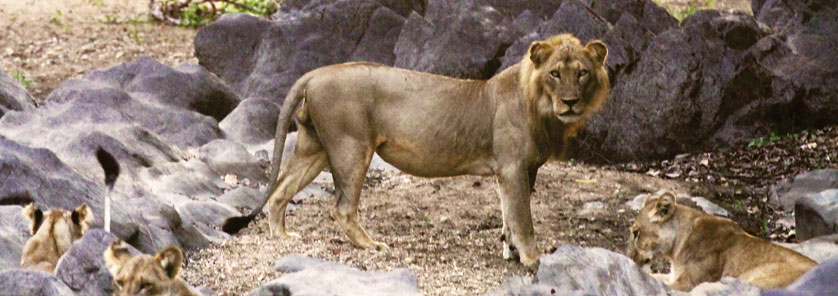
Vaccination Campaigns For Domestic Dogs & Wild Lions
In order to eradicate canine distemper and rabies, the only existing solution is to vaccinate dogs and lions again both diseases. Domestic dogs are the reservoirs, and lions are the victims and it is as much a question of public health as it is wildlife protection.
→ Gathering of all domestic dogs in each village surrounding the protected areas for systematic vaccination against rabies and distemper (and their identification by microchip). These two protocols take place simultaneously and enable an official individual census of all dogs thus identified by microchip and vaccinated (set up an official individual vaccination booklet).
→ This operation also implies the physical elimination of all unidentified stray dogs, or the relocation of these dogs after inoculation with vaccines.
→ Mandatory declaration by villagers of any reproduction of their dogs in order to carry out the same census, identification, and vaccination.
→ Sterilisation of certain dogs could also be considered in order to limit their uncontrolled proliferation.
→ Vaccination of all lions, and identification by microchip, as well as their census. These operations imply a trained team to track, capture (by dart gun), take blood samples (for antibody, scientific and health research purposes), microchip, and vaccinate against rabies & distemper.
→ Some individuals may be equipped with a transmitter collar to allow for the mapping of their movements and territorial requirements.
→ Gathering of all domestic dogs in each village surrounding the protected areas for systematic vaccination against rabies and distemper (and their identification by microchip). These two protocols take place simultaneously and enable an official individual census of all dogs thus identified by microchip and vaccinated (set up an official individual vaccination booklet).
→ This operation also implies the physical elimination of all unidentified stray dogs, or the relocation of these dogs after inoculation with vaccines.
→ Mandatory declaration by villagers of any reproduction of their dogs in order to carry out the same census, identification, and vaccination.
→ Sterilisation of certain dogs could also be considered in order to limit their uncontrolled proliferation.
→ Vaccination of all lions, and identification by microchip, as well as their census. These operations imply a trained team to track, capture (by dart gun), take blood samples (for antibody, scientific and health research purposes), microchip, and vaccinate against rabies & distemper.
→ Some individuals may be equipped with a transmitter collar to allow for the mapping of their movements and territorial requirements.
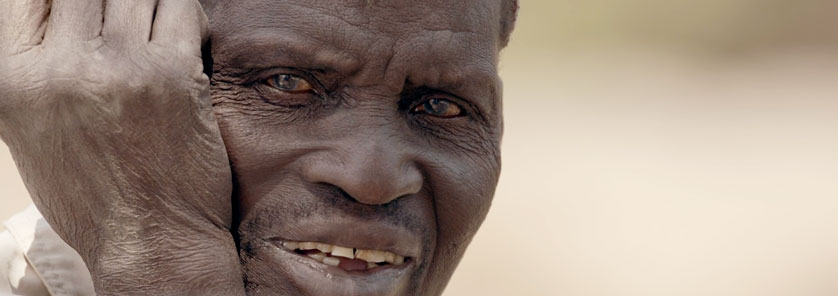
Local Populations Awareness & Involvement Programs
To us, there are two ways to influence people to adopt a desired behavior: argue (rational logic) or inspire (emotional logic). Emotional logic often prevails in the villages surrounding our protected areas. It will therefore be necessary to inspire rather than argue, and to implement actions to reduce the emotional distance between people and the areas they will be contributing to protect.
→ Raising awareness in schools & villages about environmental issues related to illegal and harmful activities (setting up of educational programs, visiting protected areas, wildlife farms, etc.). Meeting with local partners of tomorrow, recruitment sessions.
→ Waste management and treatment campaigns.
→ Assist local populations in the rational and sustainable use of their natural resources, introduction to the economic alternatives put in place.
→ Show traditional chiefs that we are part of the development of the local economic fabric so that they become supporters, followers, and educators of our good practices within their villages.
→ Include local populations in the conservation landscape with incentives so that local people become actors of wildlife conservation. Establish reward and sanction systems.
→ Create a network of TANGO informants (gather intelligence).
→ Raising awareness in schools & villages about environmental issues related to illegal and harmful activities (setting up of educational programs, visiting protected areas, wildlife farms, etc.). Meeting with local partners of tomorrow, recruitment sessions.
→ Waste management and treatment campaigns.
→ Assist local populations in the rational and sustainable use of their natural resources, introduction to the economic alternatives put in place.
→ Show traditional chiefs that we are part of the development of the local economic fabric so that they become supporters, followers, and educators of our good practices within their villages.
→ Include local populations in the conservation landscape with incentives so that local people become actors of wildlife conservation. Establish reward and sanction systems.
→ Create a network of TANGO informants (gather intelligence).
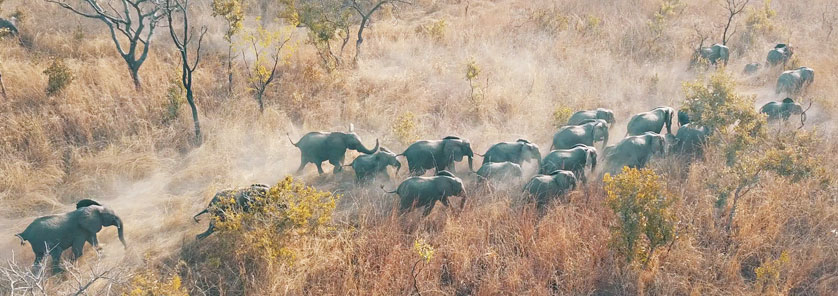
Restore Connectivity between Protected Areas
Reopening of identified ecological corridors, including elephant migration corridors with potential partial or total relocation of villages. Permanent monitoring of the integrity of ecological corridors.
All of these actions aim to create employment for hundreds or thousands of people and thus divert them from activities that are harmful to the environment, often illegal, to value-added & good-logic activities. The involvement of women and young people in these projects directly responds to the socio-economic issues that are at the heart of international concerns today.
